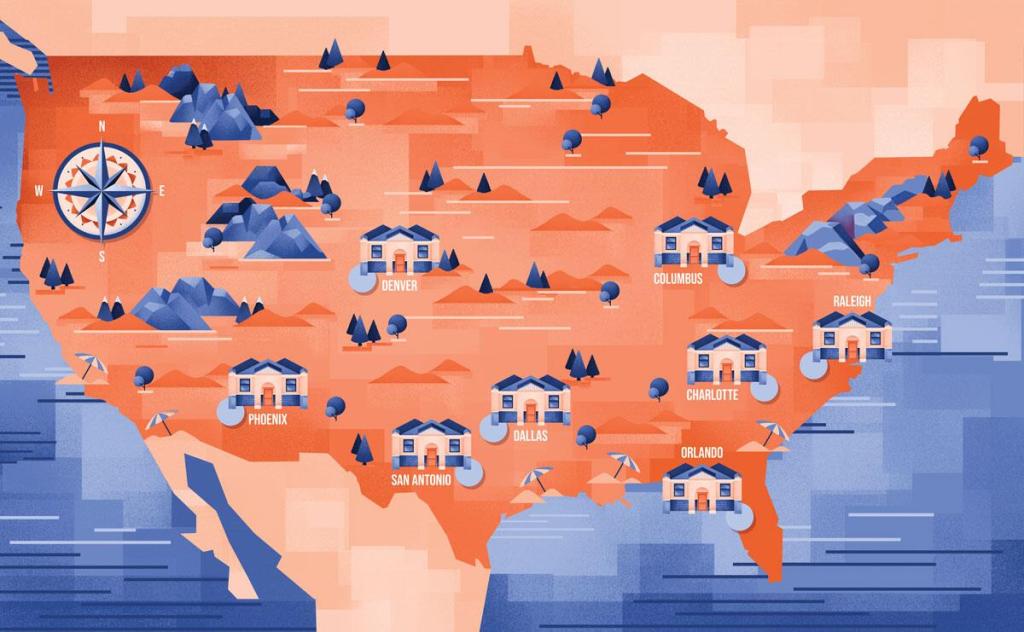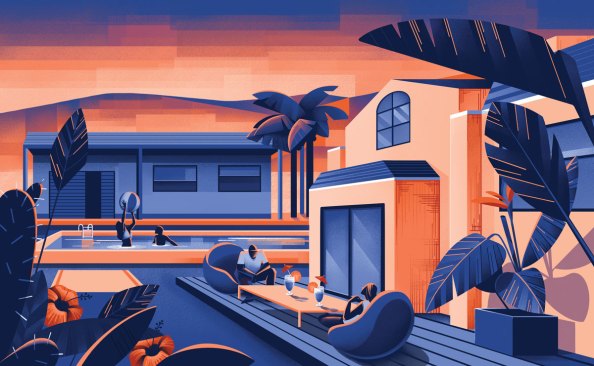
Chiara Vercesi
This is when it gets hard to sell houses again. And that’s good news for home builders in the burgeoning single-family build-to-rent (BTR) space.
After nearly two years of surprisingly brisk demand from buyers that drove home prices and sales higher across the country, a slowdown has finally arrived. Rising mortgage rates, tacked onto home prices that had grown as much as 19% in 2021—the biggest rise in 34 years—chased away foot traffic at spring openings.
“Housing leads the business cycle, and housing is slowing,” said NAHB chairman Jerry Konter in a May release announcing the worst showing for builder confidence since June 2020.
That, of course, was right before millions of Americans, faced with the uncertainty of the unfolding COVID-19 pandemic, did the unexpected and started buying houses in droves. Instead of hunkering down, hoarding cash, and staying put, home buyers left major metropolitan areas and sought single-family homes in the suburbs, where they could find enough space to work remotely while avoiding elevator rides and awkward hallway greetings with their neighbors.
As the Fed slashed its way toward stimulating the economy, the corresponding dramatic rise in home prices didn’t stymy demand, with low mortgage rates keeping monthly payment amounts in reach.
But that all changed in the first half of 2022. With three interest rate hikes in the rearview mirror and more expected as the Fed battles unabated inflation, mortgage rates crossed the 5% threshold for the first time in 13 years. The NAHB/Wells Fargo Housing Market Index cratered.
A measure of current sales, sales expectations, and home buyer traffic, the index’s three components all posted losses in June.
But the blood on home selling’s tracks has a gilded glint, when viewed through a BTR lens.
BTR’s Shiny Penny
“Homeownership just got punched in the gut,” says Mark Wolf, CEO of San Antonio–based AHV Communities, a developer, builder, and operator of single-family BTR homes. “We’re seeing another resurgence of the demographic shift toward renting houses versus buying them.”
By contrast to what’s happening on the sales side, the single-family BTR market, where developers create entire communities of stand-alone units with the sole intent of renting them out, has been on a tear. Single-family rents started 2022 up 12.6%, the largest increase in 17 years, according to CoreLogic, and have even outpaced similarly surging apartment rent gains during the pandemic.
“BTR is the hottest sector in residential real estate right now, bar none,” says Katie Fidler, director of research and communications at Atlanta-based developer and asset manager St. Bourke. “It’s actually been outperforming traditional multifamily investments in rental growth and occupancy for half a decade.”
St. Bourke has partnered with Atlanta-based Quinn Residences, a dedicated BTR operator, and helped it grow from just four communities at the beginning of 2021 to 17 now, either open or in development. Quinn, for its part, operates 2,300 BTR homes across the Southeast and raised $900 million in equity in October 2021, well beyond its original goal of $250 million.
“Our growth in this sector is propelled by evolving demand, shifting demographics, and increasing concerns around housing attainability and financial flexibility,” says Richard Ross, Quinn Residences’ CEO.
According to data from home building consultancy Zonda, publisher of BUILDER, a record 7,724 BTR units were completed in 2021, with another 13,981 on the way this year. That will add to the 45,804 units built since 2000. According to the RentCafe blog by property management software firm Yardi, there are now about 90,000 existing single-family homes in the U.S. in nearly 720 communities designed specifically for renting.
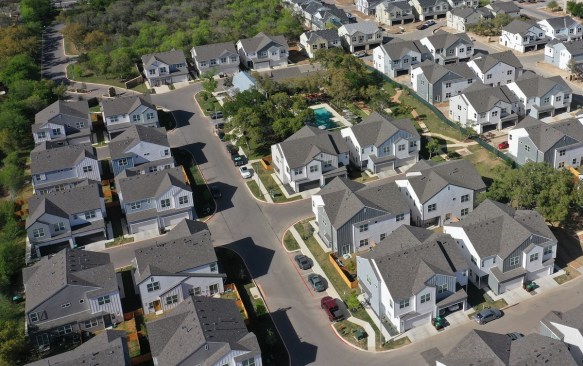
Courtesy AHV Communities
AHV Communities’ Farm Haus development in San Antonio features two-, three-, and four- bedroom layouts with modern finishes, two-car garages, and fenced-in yards.
Pulling Off the Pivot
Given that momentum, observers are now asking whether traditional, for-sale home builders can profitably pivot into the BTR market to offset the growing sales slowdown.
“That’s the $64,000 question,” says Carl Reichardt, a home building analyst at investment bank and brokerage BTIG. “Can this asset class backstop the home builders as consumer demand on the sales side slows?”
While the focus on the space has intensified this year, given the return of the cycle, traditional home builders have been tiptoeing around its edges for some time. But now, BTR has become the go-to antidote for home selling’s malaise.
Taylor Morrison, for example, has partnered with operator Christopher Todd Communities to build out its “horizontal apartment” communities, while Toll Brothers has a similar relationship with BB Living dating to 2018. PulteGroup has paired up with Invitation Homes to deliver 7,500 new BTR homes over five years, and Lennar has raised $1.25 billion in equity to support its own BTR strategy, partnering with Centerbridge and Allianz Real Estate. Finally, D.R. Horton, the country’s largest single-family home builder based on closings, expects to generate $700 million in revenues from rental property sales in 2022 alone.
“Effectively all of the public builders in one way, shape, or form are doing this, or have at least mentioned it,” Reichardt says.
Approaches run the gamut, from joint ventures with BTR operators, ad hoc bulk sales of communities or lots within a community to investors, or even internal efforts to lease and manage a number of homes directly before selling them off to the highest bidder.
‘A Different Business’
But while traditional home builders’ entry into the space is undeniable, who will win, and how, remains to be seen. Observers say that while there are myriad approaches to the sector, one constant holds among all of them: They’re distinct from the build-and-sell model.
“It’s a different business,” says Steve La Terra, CEO of Scottsdale, Arizona-based TerraLane Communities, a builder and operator of horizontal apartment communities. Founded in 2019, the firm counts more than 1,100 detached, mostly one- and two-bedroom units across five communities in the Phoenix area, ground zero for the institutionally backed BTR asset class in the U.S. “It’s really an operating model. You’ve got to recognize that and play accordingly.”
AHV Communities’ Wolf, whose firm has been in operation since 2013 and specializes in building 250- to 300-unit communities of rentable, single-family homes that range from 1,400 to 2,200 square feet and offers gated-community, country-club-like amenities to residents, underlines that distinction.
“It’s a value- and service-driven component versus just a retail sales component,” Wolf says. “You’re not trying to sell those last 20 or 30 homes so you can close out a community and move on to the next one. We’re a home builder because that’s the widget we deal in. But we’re really more of an apartment company, even though our product is single-family homes.”
For that reason, La Terra says traditional home builders need to pick their spots—and partners—carefully.
“If a home builder plans, on their own, to go into the BTR space without some sort of affiliation with an experienced operator, I don’t think that’s a good go-forward strategy,” La Terra says.
The impact of rising mortgage rates can’t be overstated, either. Observers say that until recently, many BTR customers were renters by choice. Now, the average monthly 30-year fixed mortgage payment for a newly constructed home is up 82% from $1,382 in February 2020 to $2,514 as of April, according to Zonda. That means even more than before, affordability is playing into the BTR rental decision. For operators, the first rule of property management—that rents must pencil against carrying costs—is paramount.
“You always have to remember that housing is a monthly payment business,” says Tim Sullivan, senior managing principal at Zonda. “People will buy or rent what they can afford.”
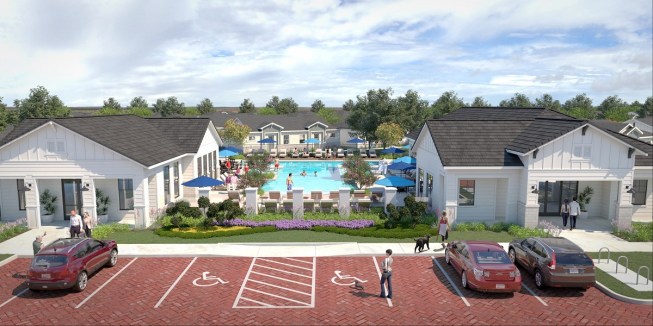
Courtesy Taylor Morrison
Taylor Morrison and Christopher Todd Communities are partnering on build-to-rent projects in Arizona, Florida, North Carolina, and Texas.
A Bifurcated Market
One of the first aspects to recognize about BTR, observers say, are the two distinct product types currently dominating the market, and the demographics to which they appeal. The smaller, one-story bungalows—horizontal apartments—that TerraLane produces on a single property that’s platted like a traditional apartment community are going to appeal more to younger millennials and downsizing boomers.
The larger, multistory homes that AHV Communities focuses on, which can be built on individual lots like a typical subdivision, will attract more of a home buyer demographic, particularly families.
“Ultimately, the renter profile is self-selecting, based on bedroom count and unit size,” says Sullivan. “In the horizontal apartments, you’re not going to see a whole lot of families. But in the single-family detached communities, that’s where you’ll find the two-and-a-half kids, a dog, and all the toys where they need a backyard and extra space.”
At Taylor Morrison, which has gained attention and prominence in the market via its partnership with Christopher Todd Communities to build horizontal apartments, that segmentation has provided a marketing opportunity for the firm to build brand loyalty among its customers, particularly as they move from renting to homeownership.
“Taylor Morrison is primarily focused on a BTR strategy that is more complex to execute but complementary to our core for-sale business,” says Darin Rowe, national president, build-to-rent. “Taylor Morrison believes that having both product types allow us to love our customers at almost every stage of their home journey.”
What BTR Renters Want
Beyond that basic distinction, however, BTR consumers have a common desire to move beyond apartment living to have separate walls and no one living above or below them.
“Having a detached home with a yard is a huge driving factor,” says Tom Woliver, co-president of Plano, Texas–based residential developer Oxland Group. “A traditional multifamily building with one- to two-bedrooms is limiting when two residents work from home. Like a traditional single-family home buyer, BTR renters are looking for space, flexibility, and to be part of a community.”
At Taylor Morrison, unit-level amenities mean outfitting homes to a degree of fit-and-finish that goes beyond the basics of a starter home.
“These renters are looking for features that move-up buyers would incorporate into their homes,” Rowe says. “Smart-home technology, stainless steel appliances, upgraded cabinets, quartz countertops, and attractive fixtures in addition to current color palettes and exterior architectural styles are a must.”
Another gotta-have-it feature for Taylor Morrison’s clients? Making room for a family’s fur babies, too.
“Backyards that are accessible via a doggy door are important,” Rowe says.
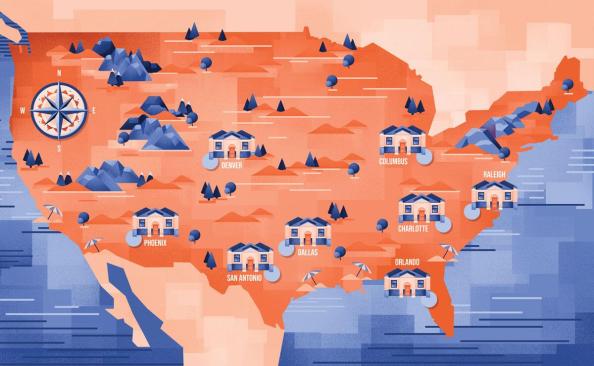
Chiara Vercesi
According to Zonda data, these eight markets are where BTR activity is most active.
Keep It Clean
These renters also are typically looking for something new, no matter the size of the individual unit.
“The newer it is, the better, the more rent you’re going to get,” says Sullivan. “The concept of being the first family to live in a place is also special. But even if it’s just a couple of years old versus 20 or 30 years old, that’s a differentiator.”
Indeed, the newness factor of BTR is one that gives home builders who want to operate in the space a competitive advantage, but it also represents an untested X-factor that hasn’t fully played out in the market yet.
“We really don’t have 10 years of history to show what our communities used to look like, and what they look like now,” says La Terra. “Most everything we do is still new.”
For Sullivan, that unknown is poised against fighting gravity and the mundane basics of property management, from oil stains on driveways to peeling paint on exterior walls.
“We’re going to see the proof of the pudding over the next three or four years, as these initial communities age,” Sullivan says. “The secret sauce for everything in the BTR space is your property management, and the capability of keeping these places looking good.”
Doing so doesn’t come cheap. For instance, Wolf says building out an amenity package at one of AHV Communities’ neighborhoods can run anywhere from $1.5 million to $4 million, before annual operating expenses.
“We don’t just have the sales team expense load,” Wolf says. “We have an operational load on an ongoing basis that includes taxes, insurance at the property level, managers, maintenance teams, repairs, and amenities upkeep.”
For a 300-unit community, Wolf says payroll can easily come in at $500,000 annually. From that perspective, running the community—and turning units beyond their initial occupancy—is also akin to apartment operations, where firms pride themselves on the speed and agility with which they can refloor, repaint, and freshen units between leases.
Chris Roe, general manager at Billdr, which connects owners and contractors for renovations, says the key to doing so in a cost-efficient way is picking one aspect of a unit and improving from there.
“You really only need to make changes to one key material, and then change the coloring of everything else to match,” Roe says. “You change out the old yellow accent oak flooring to a newer farmhouse wood flooring, and then adjust the rest of your materials to match. The house will maintain a new, fresh feel and seem adapted to newer styles without a major overhaul in materials.”
Where BTR Is Winning
Markets where BTR has the biggest potential, observers say, are akin to its birthplace of Phoenix: relatively affordable land costs in areas close to jobs, good schools, and community infrastructure.
That includes secondary and tertiary markets such as Atlanta; Charlotte, North Carolina; Colorado Springs, Colorado; Dallas; Nashville, Tennessee; and San Antonio, says Adam Kaufman, chief operating officer at New York–based real estate crowdfunding platform ArborCrowd.
“Those areas aren’t marked by the same land scarcity issues that plague other regions, making them ripe for investment,” Kaufman says. “They are incredibly attractive to consumers owing to higher quality of life and lower cost of living, and this has been driving their significant population growth in recent years.”
Similarly, AHV Communities’ Wolf says he sees opportunity in Huntsville, Alabama, where high-paying engineering and technology jobs, paired with the area’s military bases and government sector, make it a prime candidate for BTR. It’s the type of “second flight” city that developers have been seeking out in recent years. “I got turned onto Huntsville because I was looking around for deals in Nashville,” Wolf says.
But even in those markets, good real estate fundamentals still apply. For instance, Wolf says he’s started to see some frothiness in the BTR space, as investors try to clamber in.
“Location still matters, and I’m concerned with some of the locations you see get chosen for these things, where it’s 30 or 40 minutes outside of town, and there’s really no reason to be there other than the fact that it was available land on the freeway,” Wolf says. “That doesn’t do anyone any favors.”
In the end, observers say home builders who find success in the BTR sector will do so by applying the same stringent processes to it as they would their for-sale homes, while seeing it as a distinct and unique profit center.
“The rental market, first and foremost, is a business that’s different than building and selling homes,” La Terra says. “When a home builder sells a home, with the exception of the warranty, they’re pretty much done. Once we build it, we still have to lease it and manage it. And that’s really where the heavy lifting comes in.”
